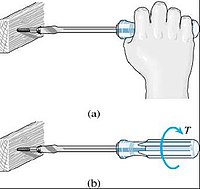Usability is the capacity of a system to enable users to perform tasks safely, effectively, and efficiently while enjoying the experience. It’s a crucial aspect of software engineering and human-computer interaction that focuses on making products easy to use and understand.
User-Centered Design Shapes Product Development
Usability isn’t just about making things look pretty. It’s about understanding how people think, work, and interact with technology. Designers and engineers who prioritize usability create products that are:
- More efficient to use
- Easier to learn
- More satisfying for users
This approach has gained popularity as complex computer systems have become part of everyday life. Companies now see the benefits of user-oriented methods over purely technology-driven approaches.
Contextual Inquiry Reveals User Needs
One powerful usability technique is contextual inquiry. This method involves observing and interviewing users in their natural environment. By watching people work, usability experts can uncover needs and design flaws that traditional market research might miss.
ISO Standards Define Usability Metrics
The International Organization for Standardization (ISO) has created standards to measure and improve usability. ISO 9241 defines usability as:
“The extent to which a product can be used by specified users to achieve specified goals with effectiveness, efficiency, and satisfaction in a specified context of use.”
This definition gives us clear metrics to assess usability:
- Effectiveness: Can users complete their tasks?
- Efficiency: How quickly can users perform tasks?
- Satisfaction: Do users enjoy using the product?
Evaluation Methods Test Usability in Practice
Usability experts use a variety of methods to evaluate products:
Heuristic Evaluation Finds Common Problems
In a heuristic evaluation, experts review a product against established usability principles. Jakob Nielsen’s ten heuristics are widely used in the industry. These include:
- Visibility of system status
- Match between system and the real world
- User control and freedom
Usability Testing Observes Real Users
Nothing beats watching real people use your product. Usability testing involves:
- Defining tasks for users to complete
- Observing users as they work
- Collecting data on task completion, errors, and user satisfaction
This method can reveal surprising insights about how people actually interact with your product.
Iterative Design Improves Products Over Time
Usability isn’t a one-time effort. It’s an ongoing process of testing, refining, and improving. The iterative design approach involves:
- Creating a prototype
- Testing it with users
- Analyzing the results
- Making improvements
- Repeating the process
This cycle ensures that products become more usable with each iteration.
Benefits of Usability Extend Beyond User Satisfaction
Investing in usability pays off in multiple ways:
- Higher revenues through increased sales
- Reduced development and support costs
- Increased user efficiency and satisfaction
In the workplace, improved usability can lead to higher productivity, lower training costs, and happier employees.
By focusing on usability, companies create products that are not just functional but truly delightful to use. This human-centered approach to design benefits both users and businesses, creating a win-win situation in our increasingly digital world.
Citations:
Usability can be described as the capacity of a system to provide a condition for its users to perform the tasks safely, effectively, and efficiently while enjoying the experience. In software engineering, usability is the degree to which a software can be used by specified consumers to achieve quantified objectives with effectiveness, efficiency, and satisfaction in a quantified context of use.

The object of use can be a software application, website, book, tool, machine, process, vehicle, or anything a human interacts with. A usability study may be conducted as a primary job function by a usability analyst or as a secondary job function by designers, technical writers, marketing personnel, and others. It is widely used in consumer electronics, communication, and knowledge transfer objects (such as a cookbook, a document or online help) and mechanical objects such as a door handle or a hammer.
Usability includes methods of measuring usability, such as needs analysis and the study of the principles behind an object's perceived efficiency or elegance. In human-computer interaction and computer science, usability studies the elegance and clarity with which the interaction with a computer program or a web site (web usability) is designed. Usability considers user satisfaction and utility as quality components, and aims to improve user experience through iterative design.

